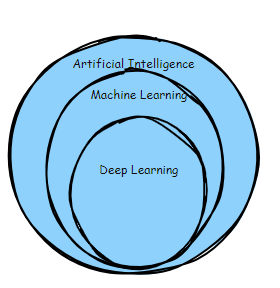- Netomate
- Posts
- From Rule-Based Systems to Learning Machines: A Personal Journey into AI
From Rule-Based Systems to Learning Machines: A Personal Journey into AI
A simple breakdown of A Personal Journey into AI
Welcome back to our Journey to AI. If you are new to here , don’t miss to check out earlier post “How Traditional AI system think “,
Have you wondered how computer can recognize face , talk like human , suggest for next movie or even suggest what you need to buy . Let's explore this transformation together.
The Early Days: Traditional AI
A long time ago , Scientist wanted computer to think like people. This idea was called Traditional AI. Because of their work, computers got better at solving problems and understanding information.
One smart person, John McCarthy, made a special computer language called Lisp to help with AI. Lisp is really good at working with symbols, like letters and numbers. Even today, some scientists still use it when working on AI.
Thanks to Traditional AI, we also learned more about how the human brain works and how computers can copy some of that thinking.
But Traditional AI had some trouble. It followed very strict rules and didn’t do well with messy or confusing problems. So, people came up with better ways to make AI smarter — like machine learning and deep learning. These new methods help computers learn from a lot of data instead of just following rules.
That’s how AI keeps getting better and better over time!

The Shift: Embracing ML and DL
Today, there are two main types of smart computer programs: Machine Learning (ML) and Deep Learning (DL). They both learn from data, but they do it in different ways.
It's important for people who build and use these programs to know the difference between ML and DL. This helps them pick the best one for what they need.
Knowing about both also helps people come up with new and better ideas. Sometimes, they even mix ML and DL together to get the best of both! For example, they might use ML first to clean up and organize the data, and then use DL to find really tricky patterns and make smart guesses.
Machine Learning (ML)
Machine Learning (ML) is when computers use different algo to get better at tasks the more they practice.
In simple words, ML is like teaching a computer by giving it lots of examples. After learning from these examples, the computer can guess or figure out things it has never seen before!
A good example is how email spam filters work:
The computer looks at tons of old emails that were marked as "spam" and "not spam," learns the difference, and then tries to catch new spam emails all by itself.
Deep Learning (DL)
Deep Learning (DL) is a special kind of Machine Learning.
It uses something called artificial neural networks, which are a lot like the way our brains work. These networks have many layers that help computers learn from huge amounts of information.
Deep Learning can look at things like pictures, words, or sounds and figure out patterns.
For example, it can help a computer look at a photo and say what’s in it!
Because DL uses so much data and many smart layers, it can be very, very good at things like recognizing faces in pictures or understanding what someone says in a recording.
Data Needs for ML and DL
Machine Learning (ML) doesn’t need a lot of data to work well.
Imagine you want to teach a computer to guess house prices — you only need a small list with basic information like house size and number of rooms.
Since it doesn’t need tons of examples, it’s faster to teach and doesn’t need super powerful computers.
ML is also easier to understand — you can usually figure out why it made a certain choice.
That’s why ML is great when you don’t have much information or when the information is nice and neat (like tables).
But ML struggles with messy stuff like pictures or sounds.
Deep Learning (DL) is different — it needs way more data, especially messy things like photos, music, or books.
Even if the information looks small (like a short story), DL still takes a lot of time because it has to work really hard to understand it.
Teaching a DL computer to recognize voices, for example, could take days or even weeks!
It also needs big, powerful computers to do all that work.
And, it's much harder to understand how DL makes decisions because it’s like a giant maze inside the computer.

We will talk more about AI in coming posts.
Smiles :)
Anurudh

Reply